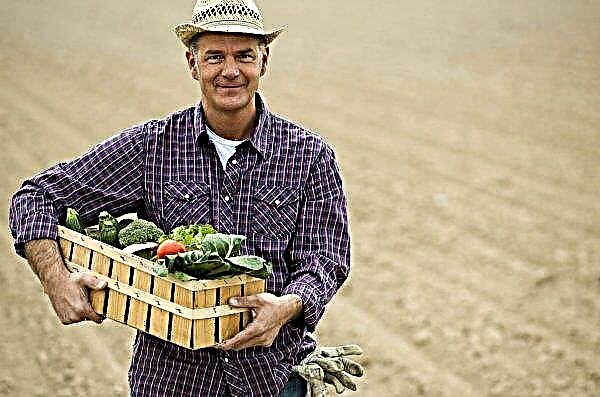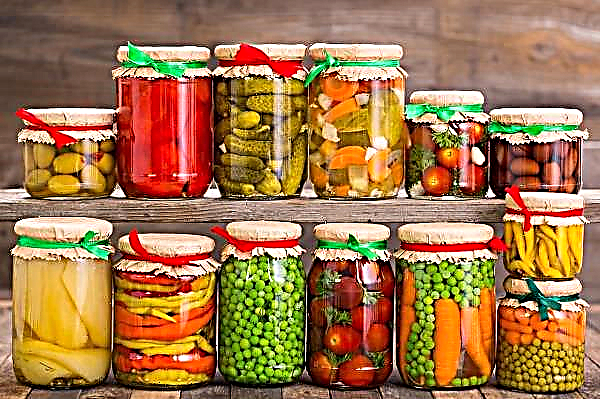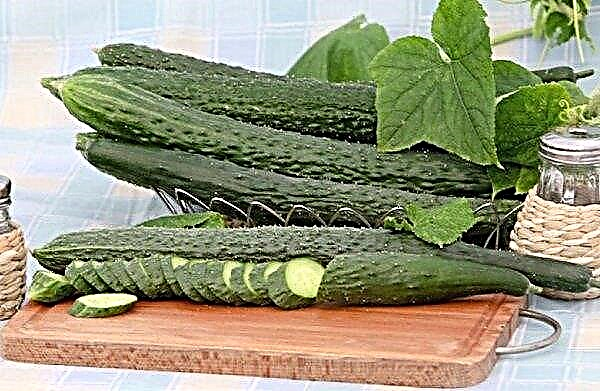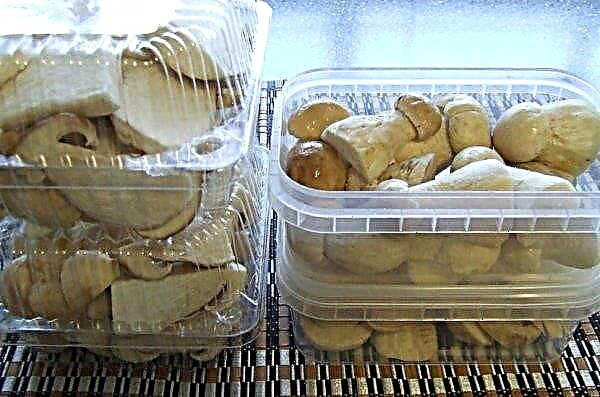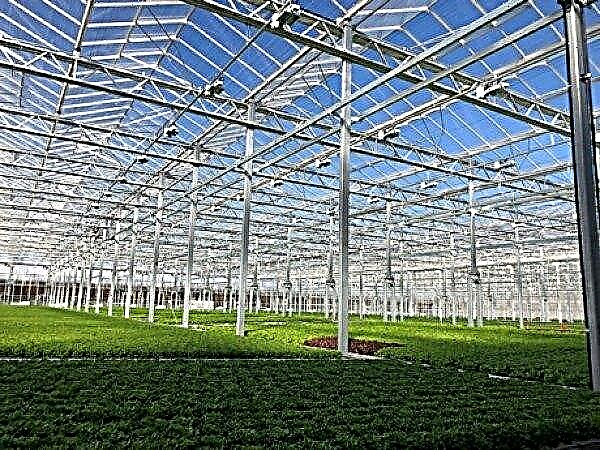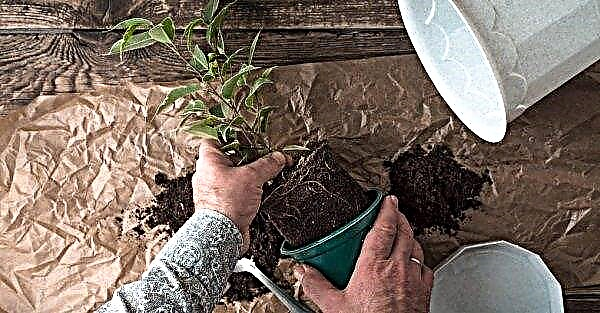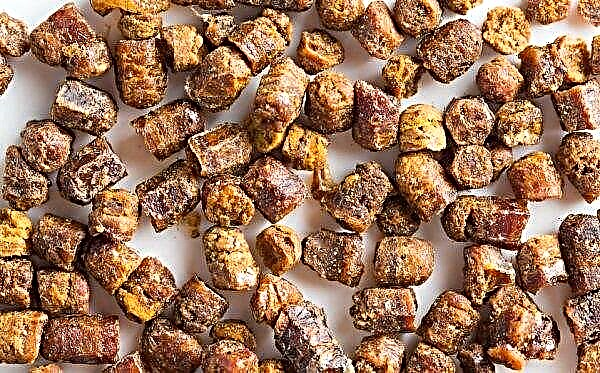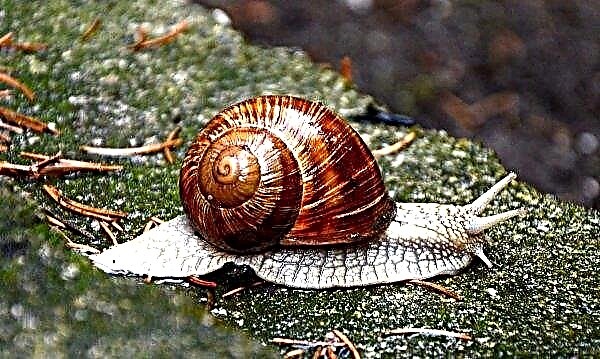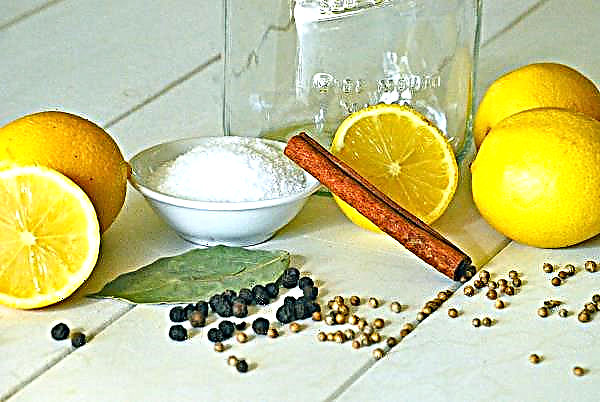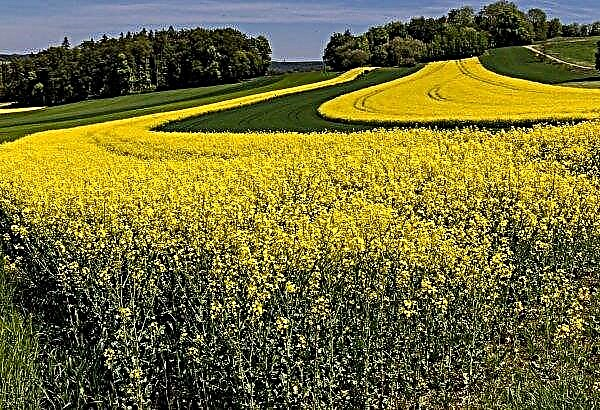Chickens are one of the most common farm animals. Birds are bred for dietary meat, eggs, while trying to choose the most productive breed. Today we consider the Lebanese chintz chicken, its characteristics and subtleties of breeding.
Origin history
For the first time they learned about the breed in tsarist Russia: the peasants of the Livensky district sought to get a bird unpretentious to feed and living conditions. As a result of painstaking work, a chicken appeared that did not require special feeds and costs, but nevertheless had high productivity indicators. Products obtained from such poultry were supplied to many European countries, including the UK.
Did you know? As a result of many studies, ornithologists from the University of Padua have found that the reflexes and skills of a daily chicken correspond to the level of development of a three-year-old child.
In the mid-twentieth century, cross-country began to enjoy popularity, and the Liven chicken was undeservedly forgotten. Its population declined sharply and would disappear altogether if it were not for the family of amateur poultry farmers from Ukraine. Farmers not only restored the endangered breed, but also returned to its former glory. At the end of the 20th century, the laying hen appeared again at the exhibitions of poultry farmers.
Breed description
For a long time, calico laying layers did not have an officially approved breed standard, since chickens were born with a wide variety of colors. In addition, the birds had other differences in appearance: different shapes of the crest, feathered or bare legs.
Appearance
Today, the standard of appearance allows for a variety of colors of plumage, takes into account other factors. The chintz hens are united by the indispensable variegation of plumage, a large physique. Consider the description of the appearance in more detail:
| Appearance | |
| Head | Medium size |
| Crest | Leafy or pinkish |
| Beak | Small yellow |
| Neck | Medium length, densely feathered |
| Chest | Wide, outstanding |
| Stomach | Rounded |
| Wings | Short, pressed to the body |
| Tail | Short, upright |
| Paws | Yellow, may be black, feathered or fledged |
| Plumage and color | Thick, dense. Color: yellow, black and white, brown, black. |
Productive qualities
By productivity, the Levensky chicken is not inferior to many crosses - it carries large eggs, gives dietary meat that is delicious in taste. Performance indicators are described in the table below.
Photo gallery
Character
The nature of the birds is phlegmatic: the hens are friendly and calmly relate to other representatives of the household. They recognize the owner and are not afraid to approach during feeding. They have a perfectly developed maternal instinct: their hens are cared for and protected. A distinctive feature of the character is that the birds are silent, unlike most of their relatives, they do not cackle even when they are hungry. Roosters can be aggressive, but this is manifested mainly when protecting their herds, offspring. If the leader sees a threat in his master, he may attack him.
Roosters can be aggressive, but this is manifested mainly when protecting their herds, offspring. If the leader sees a threat in his master, he may attack him.
Advantages and disadvantages
Like any other breed, chintz chicken has its pros and cons. Let's consider them in more detail.
- Advantages of the breed:
- high immunity;
- unpretentiousness in nutrition;
- large eggs;
- heavy carcass weight;
- resistance to cold;
- offspring care;
- flat character.
- Disadvantages:
- long time of plumage;
- long puberty;
- possible cock aggression;
- breaks own eggs.
Home Content
The maintenance of the chickens in question will not cause trouble to the owner of the herd: the arrangement of the chicken coop will not take much time, nor will large expenditures on feed be required.
Important! In the chicken coop, they must put a box with ash so that the birds can get rid of parasites.
Chicken coop
Birds need a spacious room with good ventilation. During moderate frosts in the region, chicken coop heating is not necessary, but the bedding should be thick - at least 20 cm. When arranging a chicken coop, you need to consider the following points:
When arranging a chicken coop, you need to consider the following points:
- for each individual there should be about 20 cm of perch;
- the sizes of the layers are large, so the nests should not be placed high;
- per square meter in a room should be no more than 5 birds;
- maintenance temperature in summer - + 23–25 ° С, in winter - not lower than +15 ° С;
- Lighting in the chicken coop should be present at least 14 hours a day.
The litter is changed as it becomes soiled; once a week the premises are disinfected.
Walking patio
As already mentioned, the birds are not afraid of the cold, they like to walk in the winter, peck snow, so in the room where the hens are kept there should be a hole for unhindered access to the street. In the walking yard they also place containers for feed and water. To protect the herd from birds of prey and animals, you need to stretch the net around the perimeter of the walking platform. Chickens have some flying abilities, so wings are cut to prevent pets from escaping.
To protect the herd from birds of prey and animals, you need to stretch the net around the perimeter of the walking platform. Chickens have some flying abilities, so wings are cut to prevent pets from escaping.
Feeding troughs and drinking bowls
Drinking bowls and feeders should be in sufficient quantities so that there are no conflicts over food and water. Tanks must be washed and cleaned after each meal. The material from which the bird's dishes are made can be any, most importantly - non-toxic for pets. Feeders and drinking bowls are located away from the nests of the hens: they should not be disturbed by noise.
Important! For chickens, it is better to install nipple drinkers: unstable capacity, kids can turn over.
The beginning of molting and a break in egg production
In autumn, birds begin to molt. During the change of feathers, productivity drops significantly, at the peak of molting, the process of laying eggs completely stops. But after the restoration of the feather cover, the layers are productive throughout the winter.
Herd replacement planned
High productivity in birds lasts up to two to three years of life. Then the number of eggs in chickens drops significantly, about a third. They prepare for this in advance, selecting large eggs without signs of deformation for breeding and replacement. The incubation period lasts three weeks, after which a strong and viable offspring appears. As the chickens are long-fledged, the premises for keeping them must be heated to prevent illness.
The incubation period lasts three weeks, after which a strong and viable offspring appears. As the chickens are long-fledged, the premises for keeping them must be heated to prevent illness.
Did you know? There is such a popular sign: if the rooster began to molt earlier, the winter will be unstable, with variable weather; if chicken - wait for even weather in winter.
What to feed
In order for the productivity of feathered pets to be on top, they do not have to buy specialized feeds. Birds make a balanced diet of affordable and inexpensive foods.
Adult chickens
In summer, hens graze freely, eating various insects, fresh grass. In winter, vegetables and herbs are harvested for birds. So, the diet of birds consists of the following products:
- Mishmash (on water or serum);
- crushed steamed and dry grain;
- dried and fresh herbs;
- grated vegetables;
- fish, meat leftovers;
- additives (chalk, shell rock, salt).
 Feed pets three times a day.
Feed pets three times a day.Chickens
The first day (12 hours after birth) babies are fed semolina, boiled eggs, mashed cottage cheese. After a day, greens are introduced into the diet, then fermented milk products. Many farmers add ash of burnt feathers to their chickens to speed up the plumage process. Be sure to give babies vitamins and minerals - calcium, phosphorus. The rapid growth of chicks is observed after the use of special balanced feed for babies.
To summarize: Liven chintz chicken is characterized by high productivity indicators, supplying the owner with eggs and tender meat. Unpretentiousness in maintenance, resistance to temperature extremes and a calm nature make this bird one of the most attractive in agriculture.

